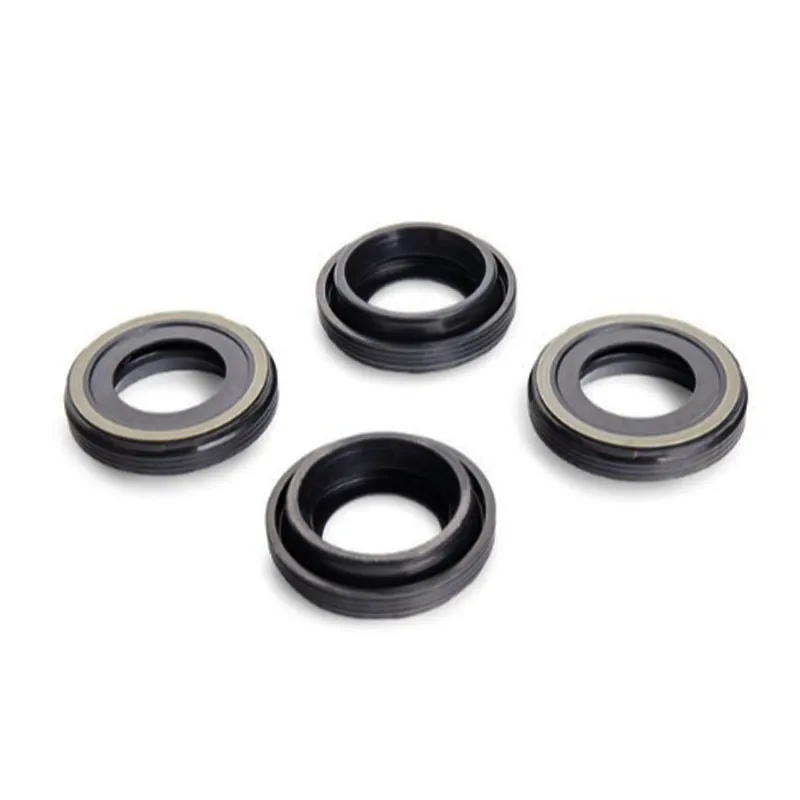Choosing Oil Seals Based on Their Dimensions for Optimal Performance
Understanding Oil Seals by Dimension
Oil seals, commonly known as shaft seals or rotary seals, play a crucial role in a wide range of machinery and automotive applications. They are designed to seal the gap between rotating shafts and stationary components, preventing the leakage of lubricants such as oil and ensuring the smooth operation of mechanical systems. One essential aspect when selecting an oil seal is its dimension, which directly influences its effectiveness and compatibility with various applications.
Importance of Dimensional Specifications
The dimensions of an oil seal include several key measurements the inner diameter (ID), outer diameter (OD), thickness (height), and the material of the seal. Each measurement plays a vital role in determining the seal's fit, functionality, and longevity. An incorrect dimension can lead to a variety of issues, such as oil leaks, contamination of lubricants, and ultimately, equipment failure.
1. Inner Diameter (ID) This measurement is critical as it indicates the size of the shaft that the oil seal will fit onto. The ID must match the shaft diameter precisely to ensure a snug fit, preventing any fluid from bypassing the seal.
2. Outer Diameter (OD) The outer diameter of the oil seal typically corresponds to the housing or the area in which the seal is seated. An OD that is too small can lead to misalignment, while an excessively large OD might not provide proper sealing.
3. Thickness The thickness or height of the oil seal is also significant. It should complement the depth of the housing to which the seal is fitted. If the seal is too thick, it may interfere with other components; if too thin, it may not provide adequate sealing pressure against the shaft.
oil seal by dimension

Materials and Their Dimensional Impact
The material chosen for the oil seal is just as crucial as its dimensions. Common materials include rubber, silicone, and various polymers. Each material offers different levels of resistance to temperature, chemical exposure, and wear, influencing the seal's overall performance and life span. Rubber seals, for instance, are commonly used for their elasticity and ability to maintain a tight seal under varying conditions. However, the dimensional specifications must be consistent with the material used, as different materials may have varying compressibility and hardness.
Selecting the Right Oil Seal
When choosing an oil seal, it is vital to reference the manufacturer’s specifications, which will provide detailed information on the recommended dimensions and material options. By following these guidelines, engineers and technicians can ensure that they select an appropriate seal that meets the operational requirements of their equipment.
Conclusion
In conclusion, understanding oil seals by dimension is essential for maintaining the efficacy and reliability of machinery. Properly sized oil seals prevent leaks and protect sensitive components from dirt, debris, and moisture, thereby enhancing overall operational efficiency. Attention to detail in selecting the correct ID, OD, thickness, and material will go a long way in safeguarding equipment longevity and performance. For anyone involved in machinery maintenance or engineering design, an in-depth grasp of oil seal dimensions is not just beneficial; it is a necessity.
-
Understanding the Front Main Engine Seal: Purpose, Maintenance, and Installation
News Jul.29,2025
-
Understanding O-Rings and Seal Rings: Types, Applications, and Custom Solutions
News Jul.29,2025
-
Understanding Crankshaft Oil Seals: Rear Seals, Pulley Seals, and Their Role in Engine Integrity
News Jul.29,2025
-
The Importance of Front and Rear Crankshaft Seals in Engine Performance and Oil Management
News Jul.29,2025
-
Crank Oil Seals: Functions, Types, and Cost Considerations in Engine Maintenance
News Jul.29,2025
-
A Comprehensive Guide to O-Rings and Seals: Types, Materials, and Global Applications
News Jul.29,2025
-
Mastering Diesel and Performance Engine Maintenance: A Guide to Critical Oil Gaskets
News Jul.28,2025
Products categories















